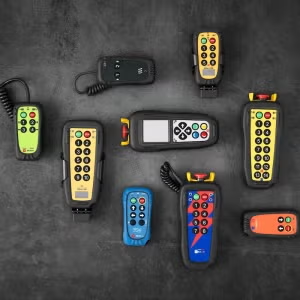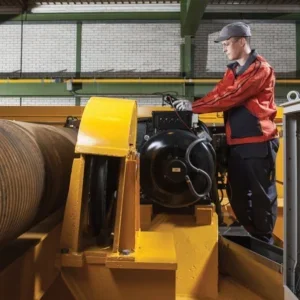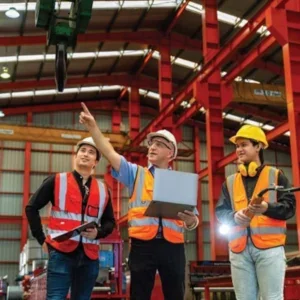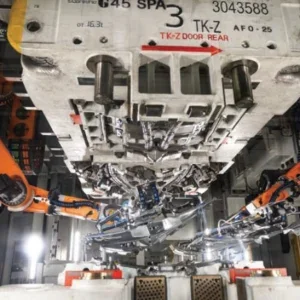KOLO’S Hoisting and Rigging Handbook is among the very first in North America to be standardised to all applicable national and international recognised codes and standards. The standards state “what to” do and this handbook, according to the authors, explains “how to” meet compliance requirements of the standards.
An industry expert and professional engineer audits the material content periodically to ensure it is current and compliant to all applicable codes and standards. The decision to write the book was a combined effort of Lisa Olver and her husband Kelly Olver. (KOLO, by the way, is a combination of their names). They are the authors, while Judy Mellott assisted them with material content, industry knowledge and is, thus, the co-author.
Since Canada and ASME B30 series recently revised their standards this is, Mellott believes, an opportune time to introduce the handbook. Since ISO 9000 revised the quality management series in 2000 defining standardisation, this handbook explains how this process can be applied to the crane industry.
Canada recently revised the CSA B167 overhead crane standards to be in compliance to the ISO international world standard for cranes. The final revision to CSA B167 was available for public review this autumn and will be approved and published in the New Year. The ISO 9926-1 – training of drivers is a single training element of the ISO standard for driver/operators that is applicable to every type of lifting device, for example, tower and mobile cranes, boom trucks and overhead cranes.
The handbook took over 10 years to design and document – including researching applicable codes, standards, other hoisting and rigging publications, industry needs and numerous safety professionals.
The KOLO Hoisting & Rigging Pocket Book (International Edition) has been available for two years. The predecessor to the book was the Alberta Specific Hoisting & Rigging Handbook, which has been utilised by the industry for the past six years.
Olver describes this as the perfect testing ground. The international version is on its second edition and is audited every three years. The Alberta version is in its fourth edition and is also audited every three years. With the changes in the Canadian and US standards both handbooks will require revision and engineer verification in the spring of 2008.
In the beginning
In 1992, Mellott was presenting a training package to a client, when he asked what makes her training programmes better than her competitors. She recalls: “My reply was that the material content was in compliance to the standards. His response was to ask me to prove it. I didn’t have an answer and it took me almost two years trying to figure out how to do it.”
It was at about that time that Mellott met an engineer who understood what she was trying to do and said it was possible to audit the material content for compliance to the standard if there was a tool to measure it to.
Mellott formed and chaired an industry committee for Alberta Occupational Health and Safety that developed and published an industry best practice guideline that listed the minimum requirements for training overhead crane operators and supervisors. This became part of checklist requirements for the engineer to audit and verify their training material content. ACTI and KOLO’S training material content for their courses are documented in accordance to the ISO 9926-1 – training of drivers.
Almost everything else they could find was either peer written, content was incomplete or there was conflict in their content with the standards.
Mellott recalls: “Lisa decided that the published materials available did not meet the compliance requirements for the crane training programmes we had both designed for our companies.” Since there was nothing available in the industry at that time, they agreed something had to be done.
Both KOLO’s and ACTI’s courseware was designed and documented to all applicable national and international standards, which are, again, audited (in this case, annually).
“Therefore,” says Mellott, “we were confident that the methodology and material content used in our training programmes would meet compliance requirements and a lot of the training material content from their courses are included in the handbook.”
As far as the authors are concerned, this is the first international hoisting and rigging handbook to be written in accordance with “all applicable” standards and codes.
Summary of the publication
The first part of the handbook is dedicated to the “responsibilities of the employer, supervisor and the worker.” The “hoisting and rigging” portion is standardised to the ISO 9926-1 – training of drivers and is, Mellott says, applicable to all the basic requirements for all types of lifting equipment.
The third part is the “documentation processes” for implementing and maintaining the training and monitoring driver/operator safe work practices. Mellott says the handbook is a complete “one-stop shop” for the company and the crane operators.
The only documentation that has not been defined is part two through five which are the training instructions unique to each type of lifting device and the regional regulatory or governing body that stipulates the criteria required for registration or certification for the driver/operators.
The author
Author Lisa Olver recalls that the publication was born as a result of an accident investigation that involved a fatality with an overhead crane. The accident was a result of improper rigging practices, she remembers.
“With this knowledge and research we were able to establish that those taking operator-training programmes were still having trouble learning all the requirements,” she explains.
Olver says it was at this point “we realised the need to change the way the course material was presented.”
Extensive research found out “everything there was to know” about the business in Canada and the US and many discrepancies and peer practices were found. She says “none had used standards to substantiate their content or statements.”
For more information visit www.AllCanadianTraining.com.






